week 10 - Confidence Intervals & Hypothesis Testing for Proportions and the Chi-squared Test for Independence
1/23
There's no tags or description
Looks like no tags are added yet.
Name | Mastery | Learn | Test | Matching | Spaced |
|---|
No study sessions yet.
24 Terms
how is p-hat distributed?

what is the structure of a CI for proportions?

what are the conditions for confidence intervals for proportions?
when using p-hat: np and n(1-p)>= 15
when using p: np and n(1-p) >=10
the dist (approx to normal) is already approximate, we have added more approximation by using p hat instead of p, thus conditions need to be stricter
how do you construct a confidence interval for proportions with a small sample?
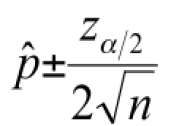
find the 90% CI for a p-hat of 0.41 and n=80 for a large sample and a small sample
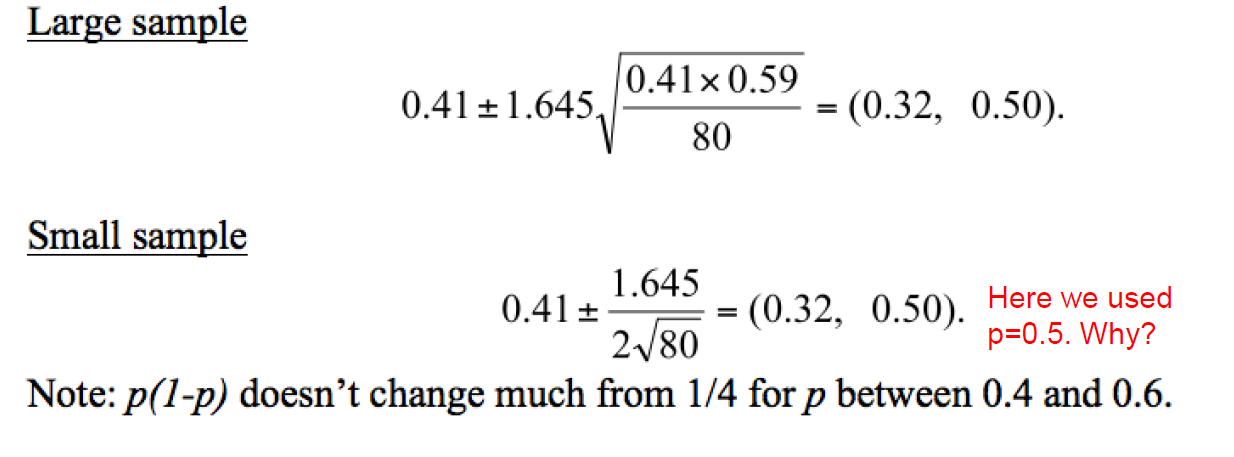
how do you calculate the appropriate sample size for a desired margin of error? if p is unknown, what value do you use instead and why?


note that maximizing (using 0.5) gives a larger sample size


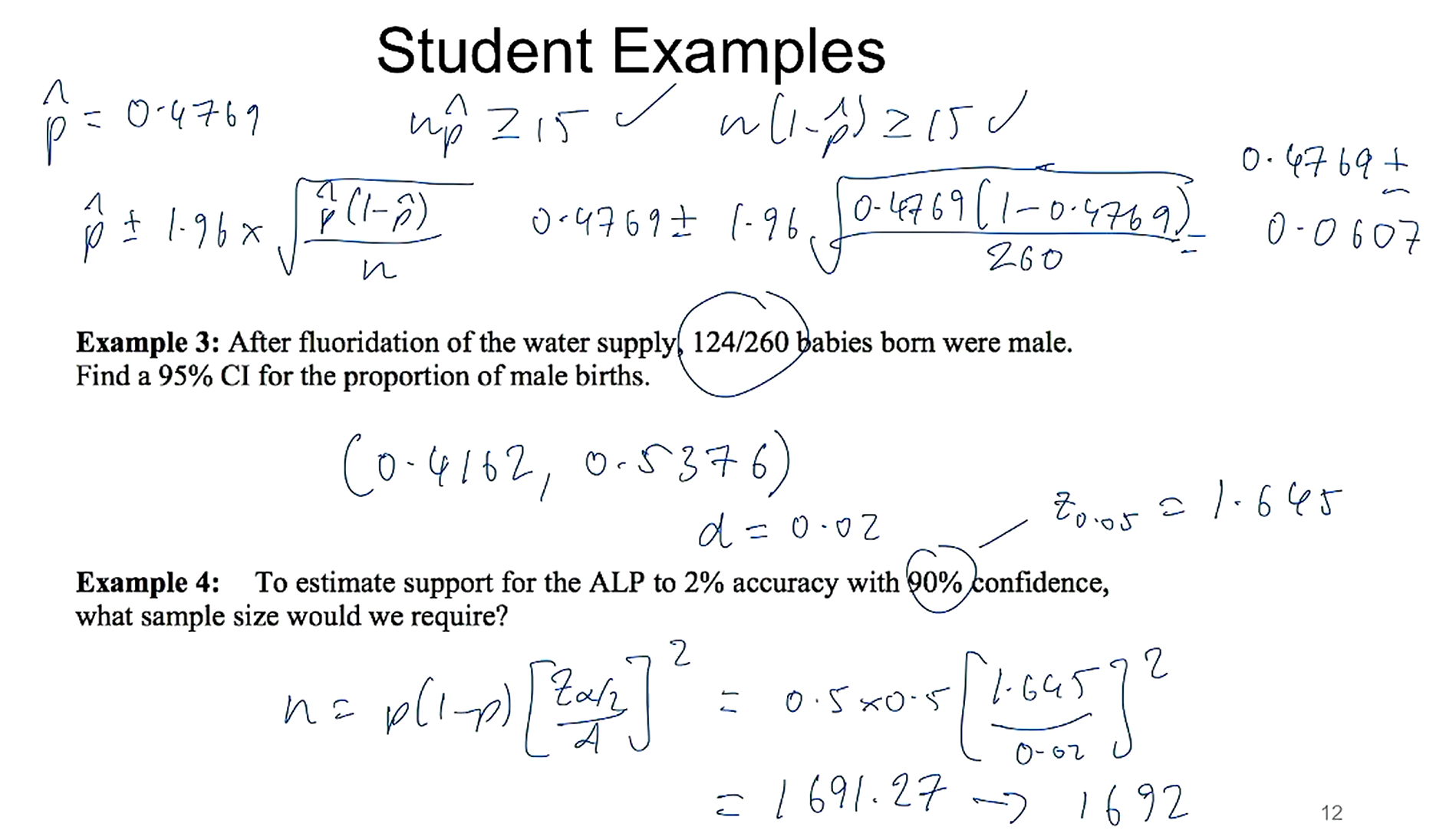
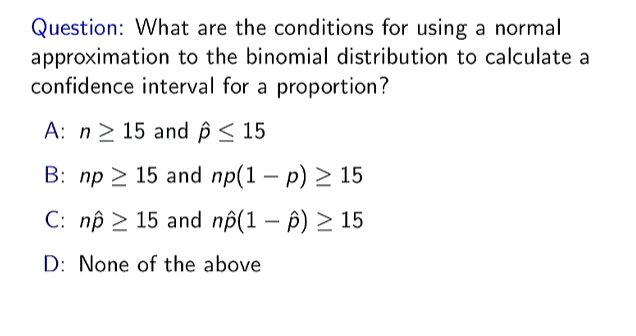
C
how do you calculate the test statistic for proportions?

what are the conditions for hypothesis tests on proportions?
np0>10, n(1-p0) = 10 (not 15 like CI)
is a 90% confidence interval directly comparable to a 1-sided test for proportions at a=0.05?
they are slightly different as we are using p0 not p-hat (which is already an approximation) in the test
what is the structure of a 95% confidence interval for comparing 2 proportions? explain how this is different to the test statistic
phat 1 is the sample prop from sample 1, phat 2 from sample 2
phat (pooled p) is the proportion of successes from the combined sample - successes from sample 1+sample 2 divided by the total (1+2)
use phat for the SD part of the test stat
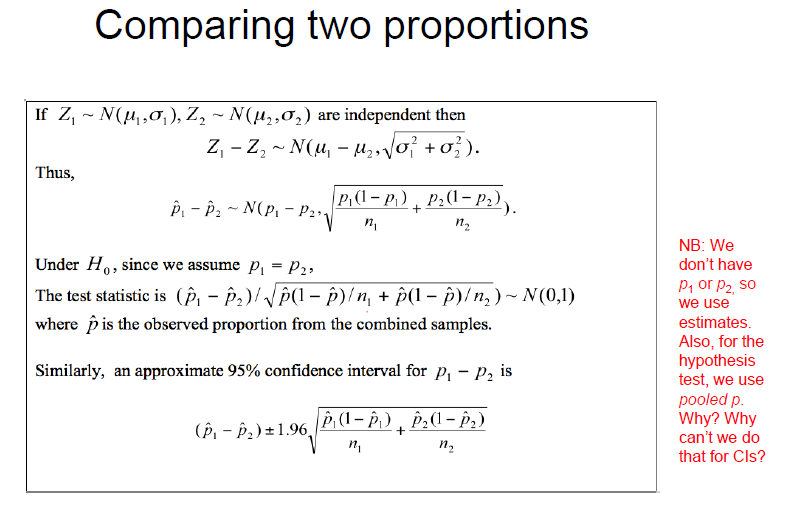

CI and test not directly comparable as pooled proportions are used for the test, but sample proportions for the CI (but should be close)

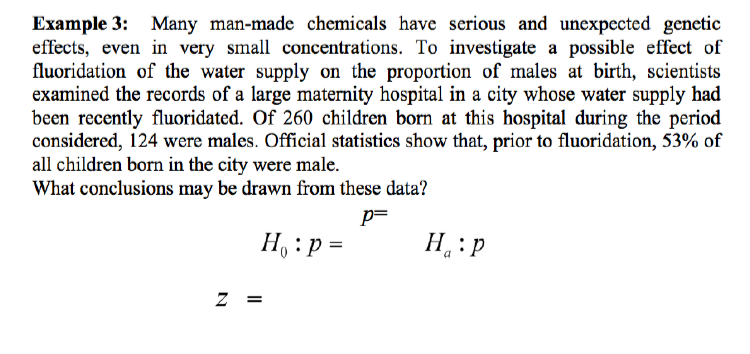
as this is a 2-tailed test - multiply p-value by 2


prob of dying in your birth month - 1/12
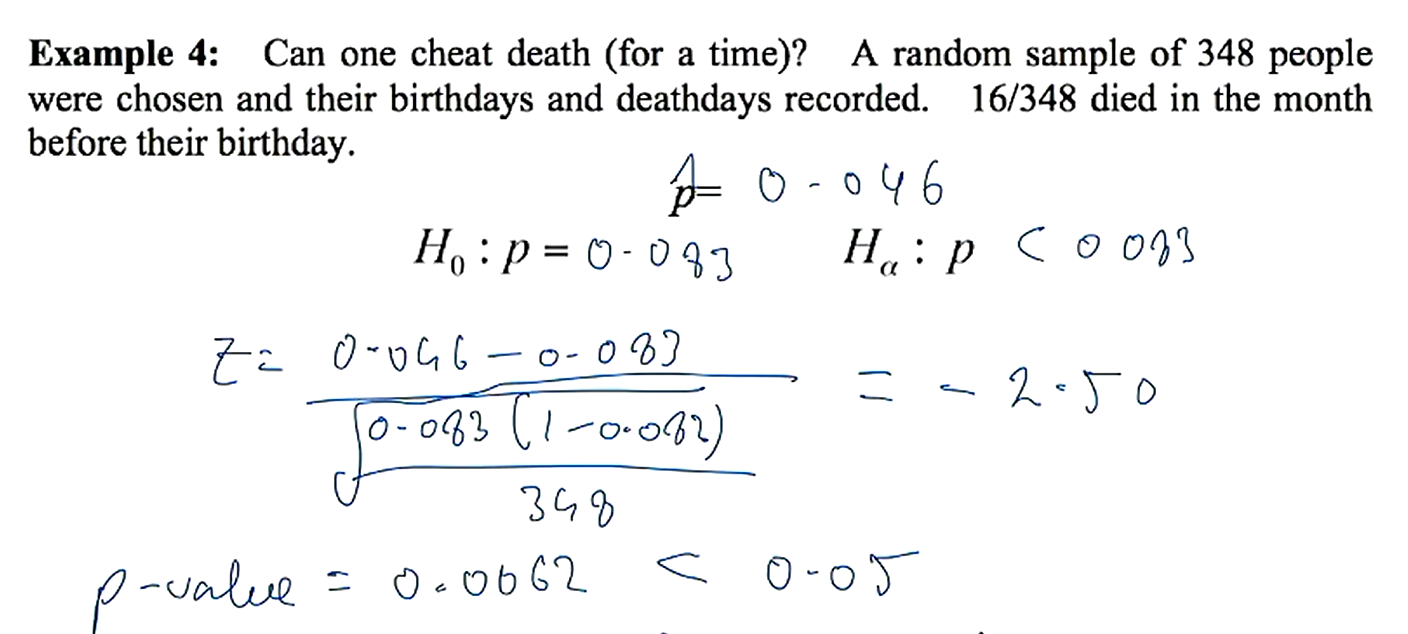
what are the null and alternative hypotheses for a chi square test for independence?
H0 - no relationship/association between the 2 variables (ie proportions are the same)
Ha - is an association/relationship, ie not H0
how do you calculate the expected counts (ie null position) for a chi square test for independence?
(row tot x col tot)/table tot
what is the chi-square test statistic? what do large chi-square values suggest?
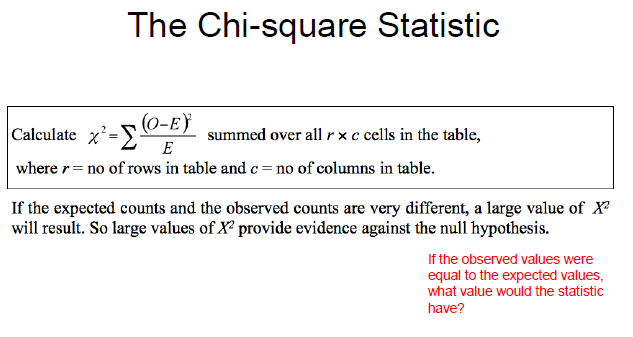
how do you calculate degrees of freedom for chi-square tests for independence?

what are the conditions for a chi-square test of independence?
all expected counts ≥5
describe the chi-square distribution
only positive values
right skew
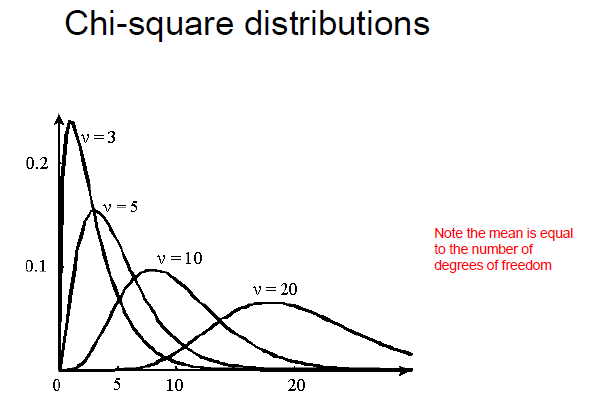
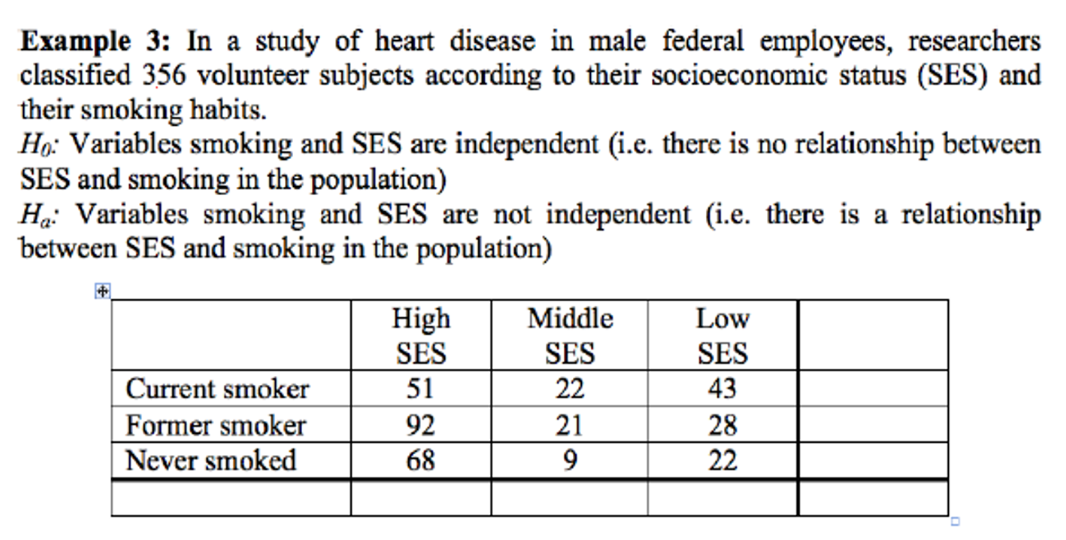

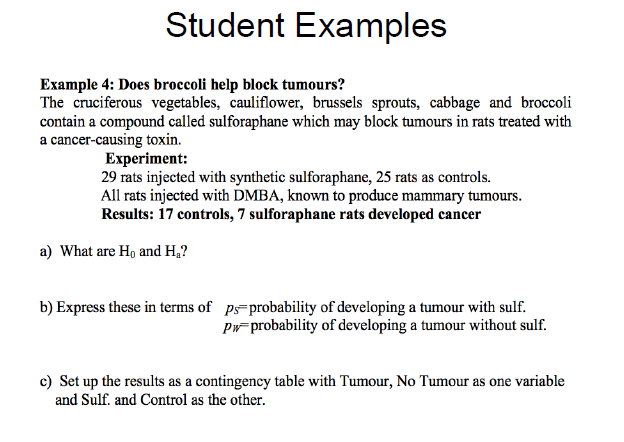
what other test can we do here?
test for 2 proportions
